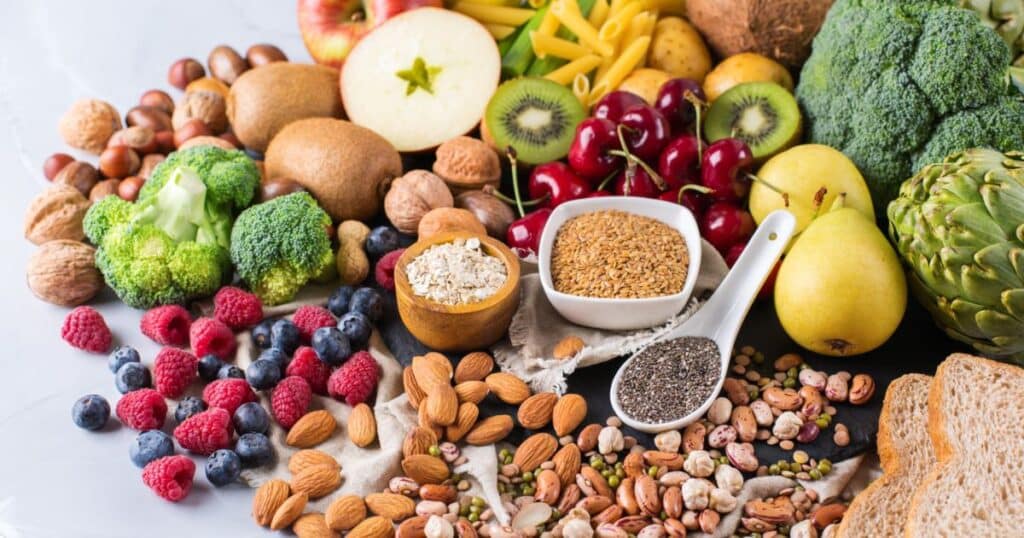Are you tossing away fruit and vegetable peels without realizing their potential? It’s time to reconsider! In this comprehensive guide, we’ll explore the often-overlooked nutritional benefits of eating peels and how they can contribute to a healthy and balanced diet. From fiber and vitamins to antioxidants and flavor, discover why peels are a valuable addition to your plate.
The Importance of Eating Peels
Fruit and vegetable peels are often rich in essential nutrients that are beneficial for overall health and well-being. While many people discard peels due to texture or taste preferences, doing so means missing out on a wide array of vitamins, minerals, and antioxidants. By incorporating peels into your diet, you can maximize the nutritional value of your meals and reduce food waste in the process.
Nutritional Benefits of Eating Peels
- Fiber-Rich: Peels are an excellent source of dietary fiber, which plays a crucial role in digestive health. Fiber helps regulate bowel movements, promotes satiety, and supports healthy cholesterol levels. By eating peels, you can increase your fiber intake and support optimal digestive function.
- Vitamin Powerhouse: Many fruit and vegetable peels contain high levels of vitamins, including vitamin C, vitamin A, vitamin K, and various B vitamins. These vitamins are essential for immune function, vision health, blood clotting, and energy metabolism. Incorporating peels into your diet can help ensure you’re getting a wide range of essential nutrients.
- Antioxidant-Rich: Peels are often rich in antioxidants, which help protect the body against oxidative stress and inflammation. Antioxidants neutralize harmful free radicals and reduce the risk of chronic diseases such as heart disease, cancer, and diabetes. By consuming peels, you can boost your antioxidant intake and support overall health.
- Mineral Source: In addition to vitamins and antioxidants, peels also contain essential minerals such as potassium, magnesium, and iron. These minerals are involved in various physiological processes, including muscle function, nerve transmission, and oxygen transport. Including peels in your diet can help ensure you’re meeting your daily mineral requirements.
Tips for Incorporating Peels into Your Diet
- Wash Thoroughly: Before consuming peels, make sure to wash them thoroughly under running water to remove any dirt, pesticides, or contaminants.
- Choose Organic: Whenever possible, opt for organic fruits and vegetables to minimize exposure to pesticides and other chemicals commonly found on conventionally grown produce.
- Get Creative: Experiment with different ways to incorporate peels into your meals. Try adding citrus zest to salads or baked goods, blending fruit peels into smoothies, or roasting vegetable peels for a crunchy snack.
- Blend It: Instead of peeling fruits and vegetables, consider blending them whole in smoothies or soups. This allows you to reap the nutritional benefits of the entire fruit or vegetable, including the peel.
- Embrace Texture: If you’re not a fan of the texture of certain peels, consider chopping or grating them finely to incorporate them into dishes without altering the texture significantly.
Start Eating Your Peels Today!
Ready to reap the benefits of peels? Incorporate them into your meals and snacks to boost your nutrient intake and reduce food waste. Whether you’re adding citrus zest to your morning oatmeal or roasting potato peels for a tasty snack, there are countless ways to enjoy the nutritional benefits of peels. So start eating your peels today and take your health to the next level!
The Importance of Including Fruits and Vegetables in a Well-Balanced Diet

Fruits and vegetables serve as the silent champions of a nutritious diet, brimming with vital vitamins, minerals, and fiber that nourish our bodies comprehensively. These colorful gems add variety to our meals and contribute to overall well-being. Incorporating a rainbow of fruits and veggies into your daily intake can boost immunity, support digestion, and promote heart health.
Each fruit and vegetable brings unique nutrients, from crunchy apples to leafy greens. Berries offer powerful antioxidants, while cruciferous vegetables like broccoli pack a punch with cancer-fighting compounds. Including a diverse array of produce ensures you’re reaping various health benefits.
Whether enjoyed fresh in salads or blended into smoothies, fruits and vegetables are crucial in maintaining optimal health. So, next time you reach for a snack, remember these nutritious powerhouses’ vital role in fueling your body for success!
The Surprising Nutritional Value of Peels
Regarding fruits and vegetables, most people peel away the outer layers and must realize the treasure trove of nutrients they might miss. wellhealthorganic.com:eat your peels: unlocking the nutritional benefits are often packed with vitamins, minerals, antioxidants, and fiber that can boost your overall health.
Take apple peels, for example – they contain a significant amount of vitamin C, essential for immune function and skin health. Citrus fruit peels are rich in flavonoids that have anti-inflammatory properties. Even potato skins offer a good dose of potassium and fiber.
By incorporating these nutrient-dense peels into your diet, you can amplify the nutritional benefits of your meals without any extra cost or effort. So next time you’re tempted to discard those colorful peels, think twice – they might just hold the key to better health!
Common Misconceptions About Eating Peels

Many people need to pay more attention traditional benefits of wellhealthorganic.com:eat your peels: unlocking the nutritional benefits, often discarding them without a second thought. However, some common misconceptions surrounding eating peels deserve to be debunked.
One prevalent misconception is that peels contain harmful pesticides or chemicals. While it’s essential to thoroughly wash fruits and vegetables before consuming them, many nutrients are concentrated in the peel.
Another myth is that peels are tough and unpalatable. Proper preparation techniques such as cooking, baking, or blending can unlock delicious flavors and textures from peels that add depth to your dishes.
Some believe that the peel adds a bitter taste to food. While this may be true for certain fruits like citrus varieties, many other peels offer a pleasant balance of sweetness and tanginess when incorporated into recipes creatively.
By dispelling these misconceptions and exploring new ways to incorporate peels into your diet, you can elevate your meals with added nutrition and flavor profiles that may surprise you.
How to Properly Clean and Prepare Peels for Consumption
Proper cleaning is essential when consuming wellhealthorganic.com:eat your peels: unlocking the nutritional benefits to remove dirt, pesticides, or residue. Start by washing the produce thoroughly under running water.
Consider using a brush to scrub off stubborn debris for tougher peels like oranges or potatoes. Organic fruits and vegetables are always a good choice if you eat the peel since they are grown without synthetic pesticides.
After washing, you can also soak the peels in water and vinegar for a few minutes to help eliminate bacteria and potential contaminants. Pat dry with a clean cloth before consumption or cooking.
If you prefer your cooked peels to be raw, consider roasting them in the oven with olive oil and seasonings for a deliciously crispy snack. For added flavor, get creative with different seasonings like garlic powder, paprika, or herbs.
Cleaning and preparing wellhealthorganic.com:eat your peels: unlocking the nutritional benefits can unlock their nutritional benefits while minimizing potential risks from residues or contaminants.
Delicious Recipes Using Fruit and Vegetable Peels
Looking to spice up your meals while reducing food waste? Wait to toss those wellhealthorganic.com:eat your peels: unlocking the nutritional benefits! Get creative in the kitchen by incorporating these nutrient-rich peels into delicious recipes.
For a refreshing twist, try making citrus peel-infused water. Simply add some lemon or orange peels to a water pitcher and let it sit overnight for a flavorful hydration boost.
Get your crunch on with crispy apple peel chips. Toss apple peels with cinnamon and a touch of sugar, then bake until golden brown for a guilt-free snack.
Don’t forget about banana peels – they’re packed with potassium! Blend them into smoothies for an added nutritional kick, or grill them for a unique savory side dish.
Zesty lemon zest pasta is another great way to utilize citrus peels. Blend finely grated lemon zest into cooked pasta, olive oil, garlic, and Parmesan cheese to create a delightful culinary delight.
Environmental Benefits of Eating Peels
The impact goes beyond personal health regarding the environmental benefits of eating wellhealthorganic.com:eat your peels: unlocking the nutritional benefits. By consuming peels instead of throwing them away, you reduce food waste. Think about all those nutrients that would otherwise end up in a landfill!
Additionally, eating peels can help lower your overall carbon footprint. When you use every part of the produce you buy, you’re decreasing the demand for more crops to be grown and transported – This translates to reduced energy usage and diminished greenhouse gas emissions.
Moreover, as organic waste such as peels decomposes in landfills, it emits methane gas into the atmosphere, exacerbating climate change—a significant concern. By incorporating peels into your diet instead of tossing them out with the trash, you’re helping mitigate these harmful environmental effects.
So next time you reach for an apple or carrot, consider keeping those nutritious peels on – not just for your health but also for the well-being of our planet.
Conclusion: Embrace the Power of Peels for a Healthier You and a Healthier Planet
Embrace the Power of Peels for a Healthier You and a Healthier Planet
By integrating wellhealthorganic.com:eat your peels: unlocking the nutritional benefits into your meals, you not only harness their nutritional advantages but also play a part in diminishing food waste. The next time you reach for an apple or prepare some potatoes, consider keeping the peels on. Create recipes that include peels to add flavor and nutrients to your meals.
Remember wellhealthorganic.com:eat your peels: unlocking the nutritional benefits, eating peels is not only good for your health but also beneficial for the environment. So, let’s make a conscious effort to eat our peels and unlock their full potential in promoting wellness within ourselves and sustainability for our planet. Eat your way to a healthier you while positively impacting the world around you – it’s truly a win-win situation!
wellhealthorganic.com:eat your peels: unlocking the nutritional benefits
At wellhealthorganic.com:eat your peels: unlocking the nutritional benefits, we’re passionate about advocating for fruit and vegetable peels to unlock their dietary benefits. By embracing the concept of “wellhealthorganic.com:eat your peels: unlocking the nutritional benefits,” we aim to empower individuals to harness the full potential of these often-overlooked produce parts. Our articles and resources delve into the wealth of vitamins, minerals, and fiber found in peels, illustrating how they can contribute to a healthier lifestyle and a more sustainable approach to food consumption. Join us on a journey of discovery at wellhealthorganic.com your peels: unlocking the nutritional benefits as we explore the myriad ways incorporating peels into your diet can enhance your well-being and support environmental stewardship.


